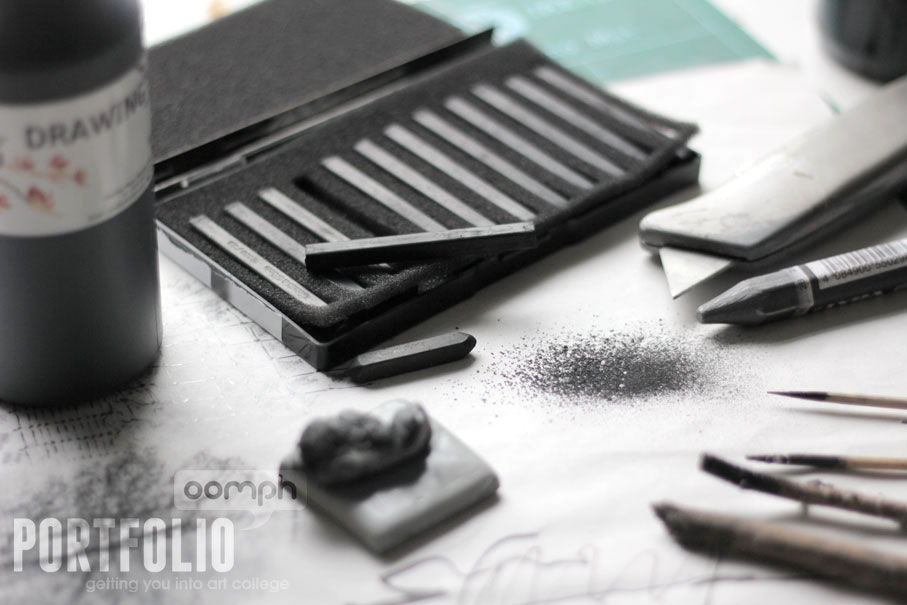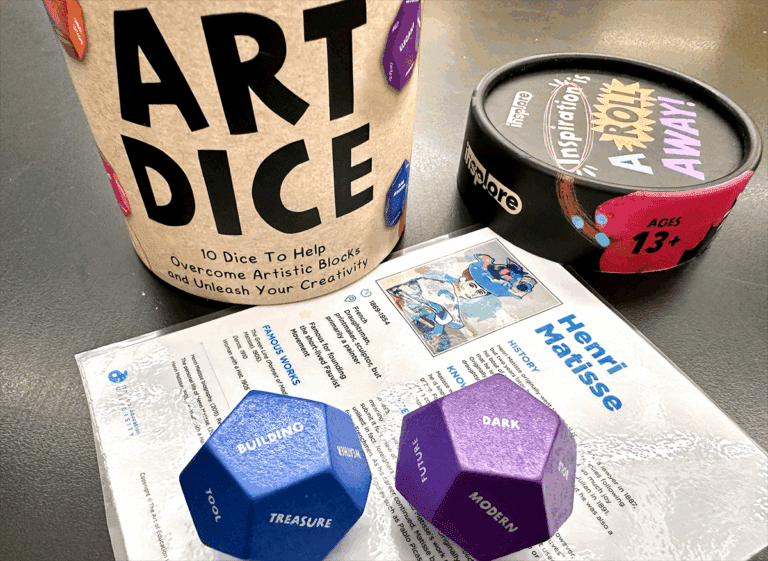In today’s educational world, it’s all about 21st Century Learning. What’s new? What’s innovative? How can students collaborate and deepen their critical thinking skills? How many acronyms can you fit into your resumé? Do you focus on STEAM? PBL? Both?
Don’t get me wrong, all of these educational initiatives are wonderful and extremely important. You should be incorporating them into your curriculum.
However, it’s easy for those things to overtake everything you do. I mean, who wouldn’t want to do an underwater photo shoot, set up a green screen, or shop at the hardware store for supplies? But, if non-traditional art making processes make up 100% of your curriculum, your students are missing out.
We can’t just toss the fundamentals of art education out the window in favor of the newest and shiniest mediums and techniques. Drawing is still important!

Julie Read, creator of Portfolio Oomph, a website devoted to helping students get into art college, wholeheartedly agrees. I had the chance to speak with Julie about this very topic. She has some wonderful insight as well as some ways to make teaching drawing truly enjoyable. Let’s dig in.

Why Is Learning to Draw So Important?
According to Julie, one of the biggest benefits of learning to draw is that it actually teaches you to see. In short, she said, “Drawing allows us to study forms, structures, spaces, and surfaces, and it gives us a much better understanding of them.”
Once a student can do that, they can move on to using drawings for other things like better understanding objects, subjects, and working through ideas and feelings.
Julie brought up a great point when she told me, “When you’re drawing, you’re making decisions constantly – about what is important, how to describe a form or line or space, and what you can dismiss. Ultimately, it’s an expression of your personal point of view, not necessarily a photorealistic representation of something.”

This idea is key. Many people view drawing as a boring means to a photorealistic end. Sure, drawing is necessary for being able to communicate your ideas and is used in many fields such as graphic design or architecture. It’s a good idea for everyone to add drawing to their list of skills so they can use visual communication more easily. However, drawing can be so much more than that.
Using Drawing to Take Student Work to the Next Level
Julie says when students break habits and let go of preconceived ideas, “…drawing then becomes about light, shadow, weight, softness, heaviness, density, movement, and change.” Students can communicate rhythm, pattern, and tempo. It’s then that the work becomes about not only the product but the process.
Playing around with drawing materials can actually help push students in new directions with ALL of their work. Julie explains, “By taking time to play with materials, ideas, and outcomes, we enable exploring; we do work that is quick and prolific, and we make in abundance.”
Here Are 3 Ways to Help Your Students Play with Drawing Materials
1. Choose materials with a wide range of mark making abilities and let students have time to explore.

Julie recommends seeing what your students can do with Conté crayons, India ink, charcoal, and graphite dust. How many different types of marks can they make with each?
2. Encourage students to hold materials in non-traditional ways.
It seems like we’ve all forgotten there’s more than one way to hold a pencil. Have your students experiment with holding their drawing materials in different ways. What happens when they grasp a piece of charcoal with their fist like a toddler would? What happens when they draw with their non-dominate hand?
3. Alter how much control your students have over the materials.

What happens if you make students draw with their eyes closed? What happens if you tape a pencil to a long stick and make them draw on the floor or the wall? How about taping paper under the tables for an entire class period? When students have less control, they’re more apt to experiment because the pressure of perfection is removed.
Taking Time to Reflect
Julie warns while experimenting is extremely beneficial, there is also a time and a place to move on to more finished work. She told me, “It is important to limit this time or else time slips away and we feel out of control to the extent that we have to rein it in back to what we know. We also feel as though we’ve not achieved anything.”
Julie says simply producing all the time is not useful. The important thing to do after experimenting is to reflect. Ask students what worked. What didn’t? What new realizations have they made? The exciting thing is that it will be different for each student.
So, if it’s been a while since you focused on drawing in your classroom, consider throwing it back in. Take some time to experiment yourself and see if it inspires you to bring drawing back into your curriculum.
Thanks so much to Julie for sharing her insight with us! You can learn more about Portfolio Oomph and Julie here. Next month, we’ll be bringing you more insight from Julie regarding what students really need to do to get into art college. Stay tuned!
What role does drawing play in your curriculum?
How do you find the right balance?
Magazine articles and podcasts are opinions of professional education contributors and do not necessarily represent the position of the Art of Education University (AOEU) or its academic offerings. Contributors use terms in the way they are most often talked about in the scope of their educational experiences.






